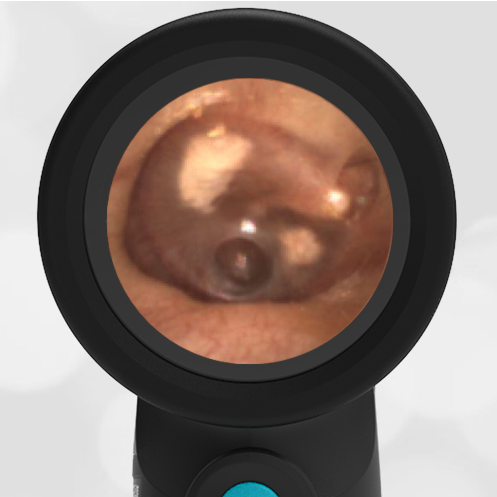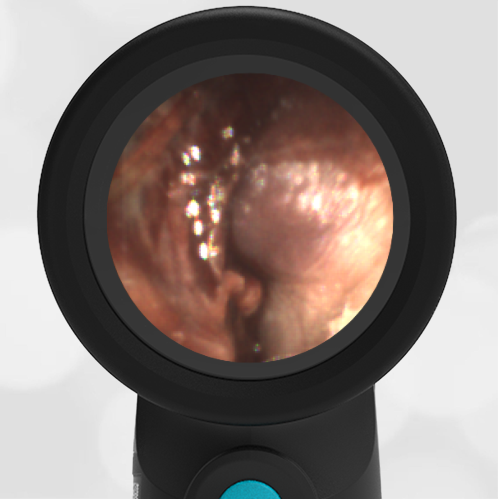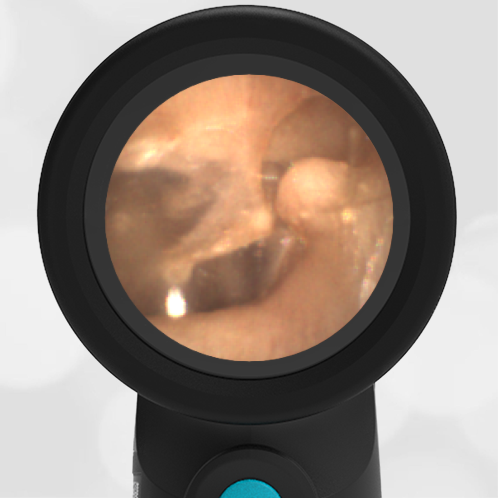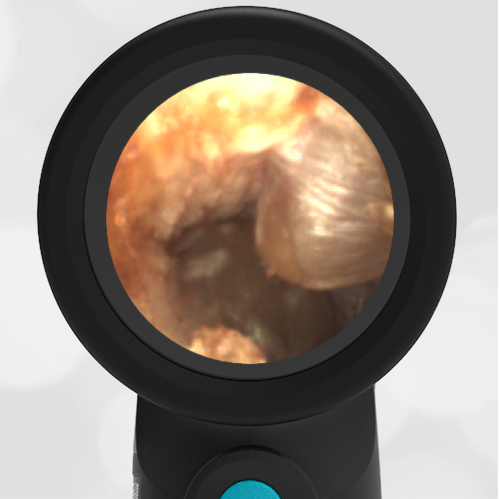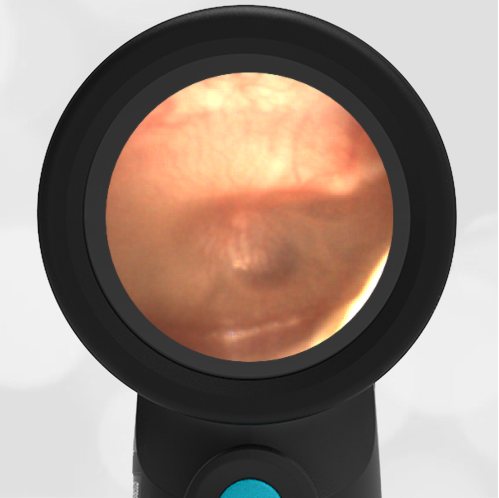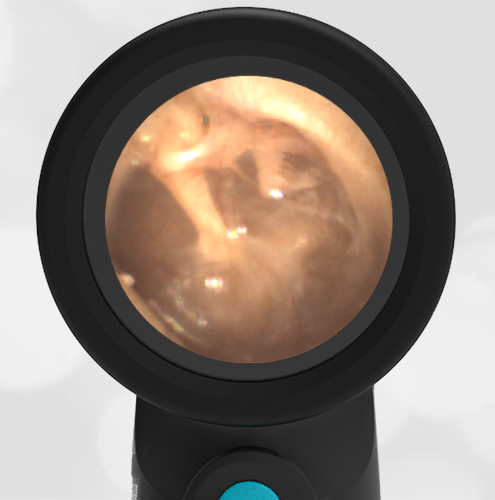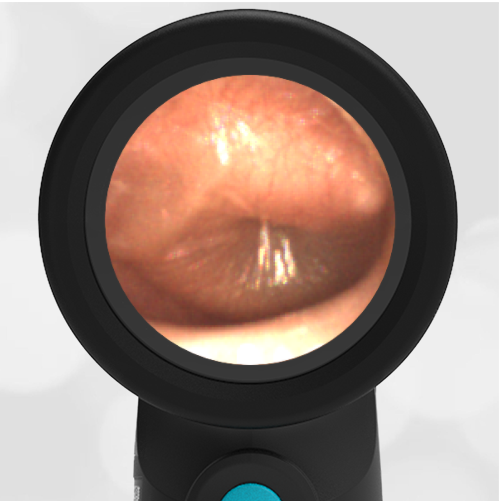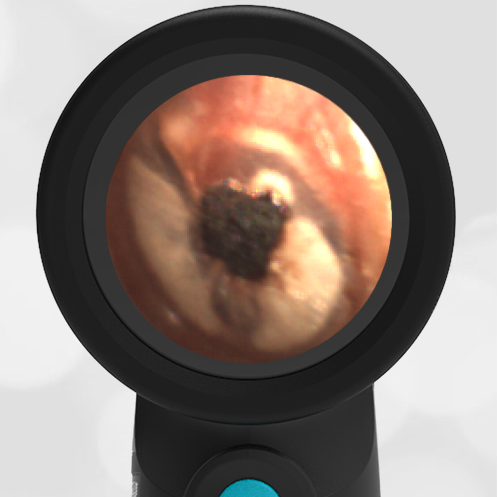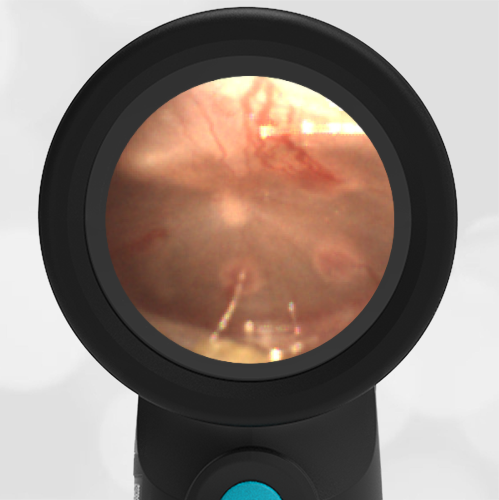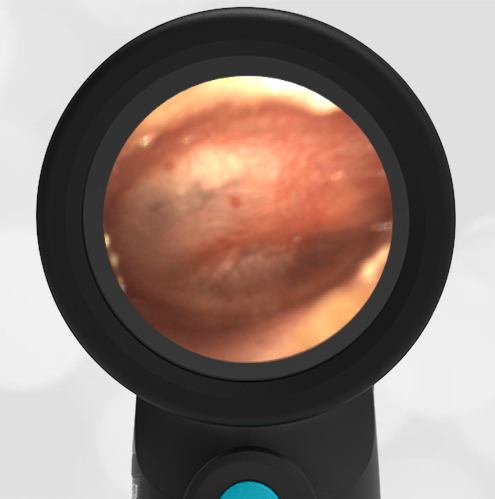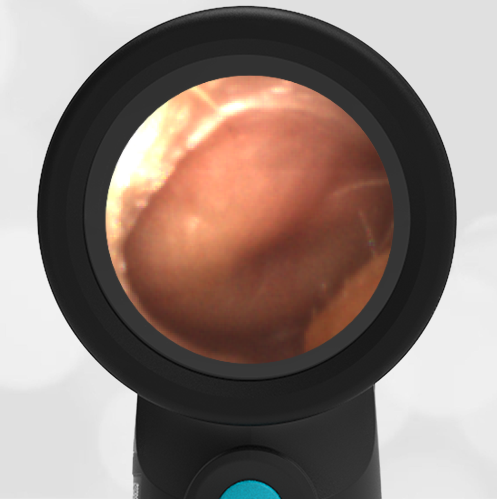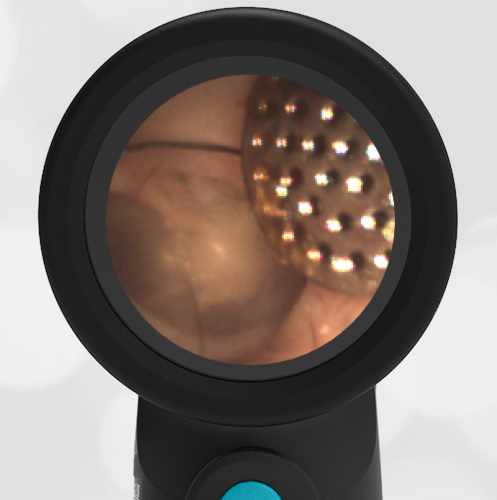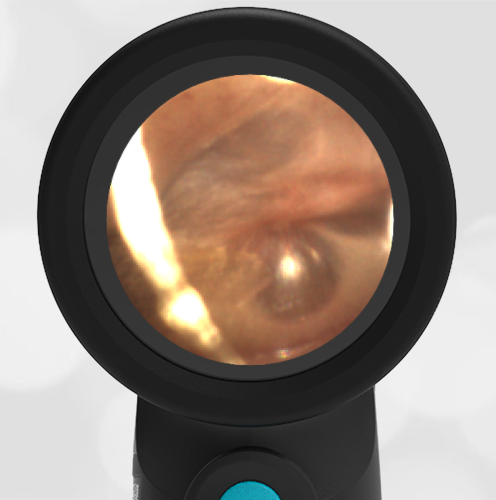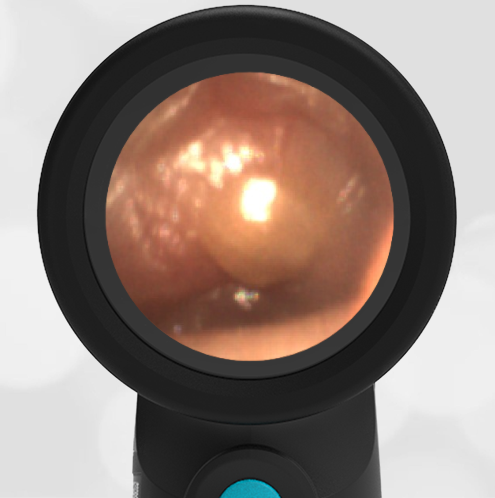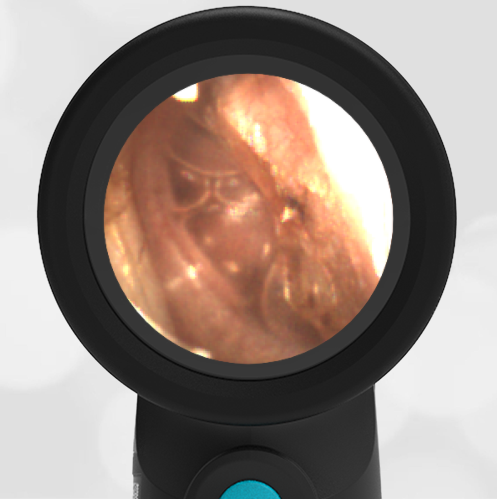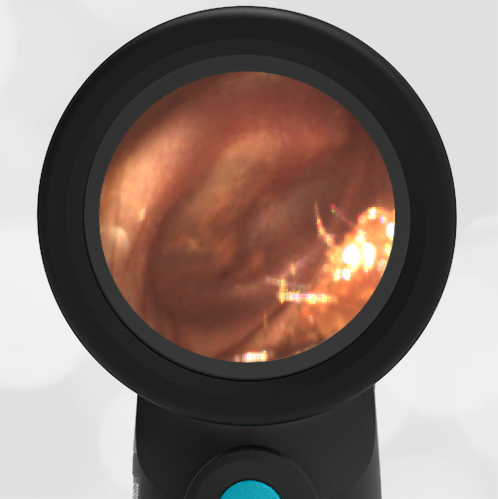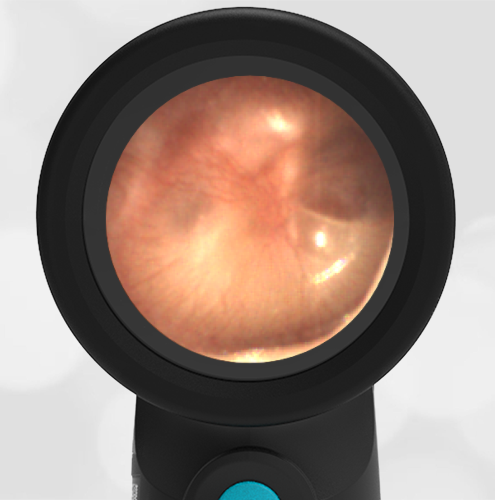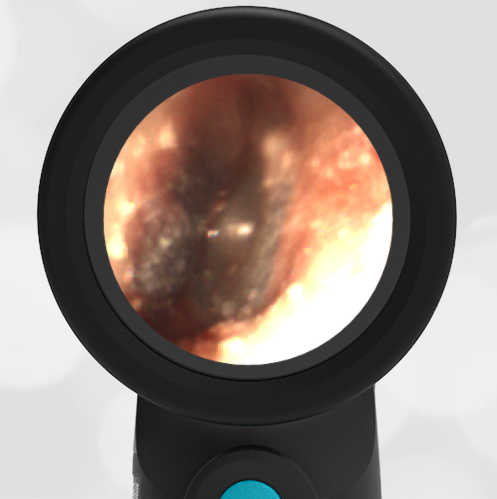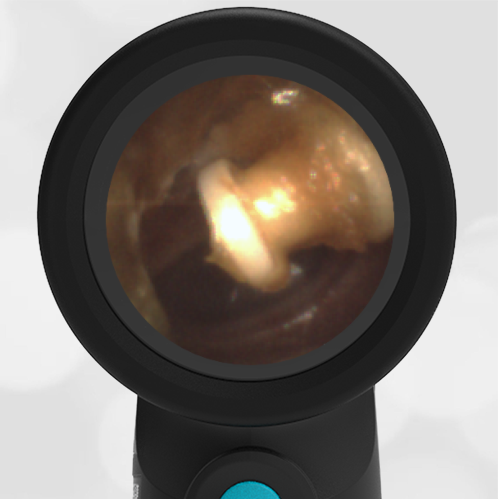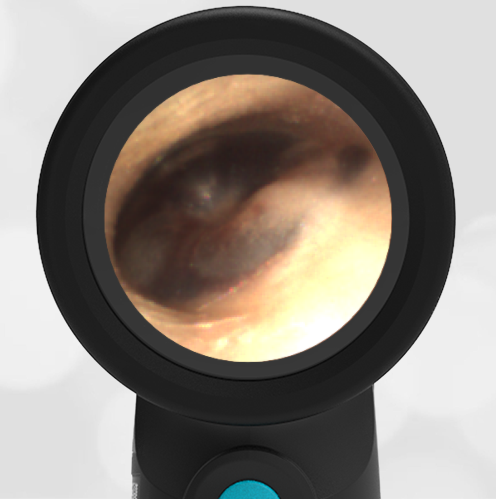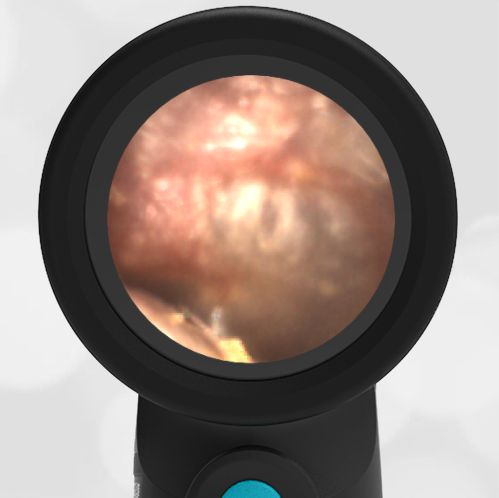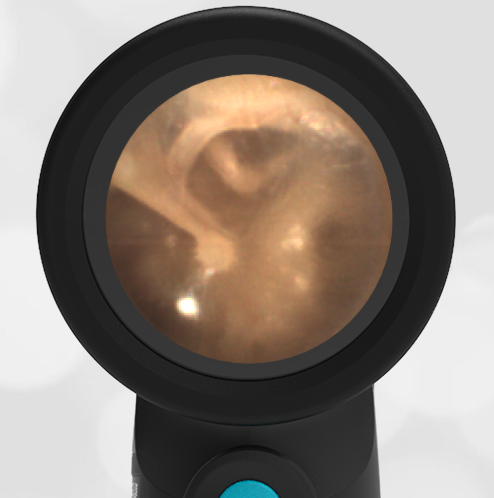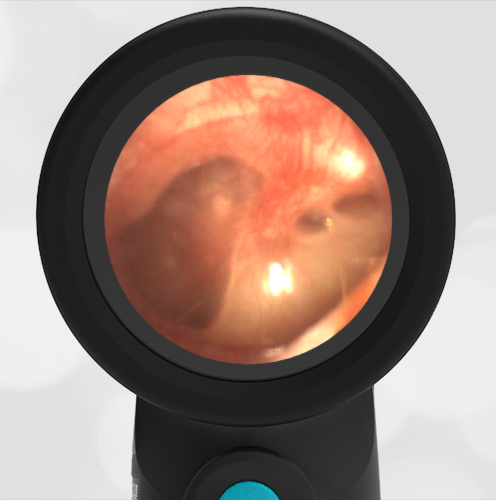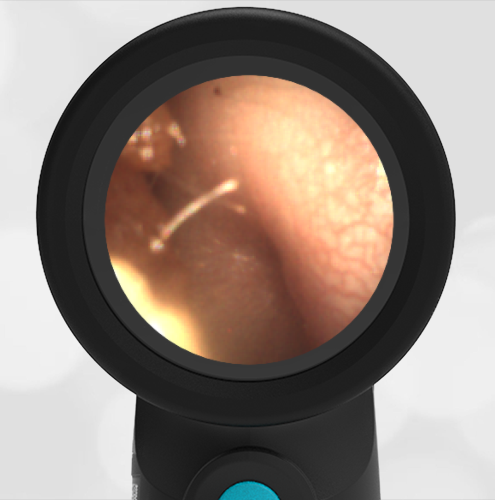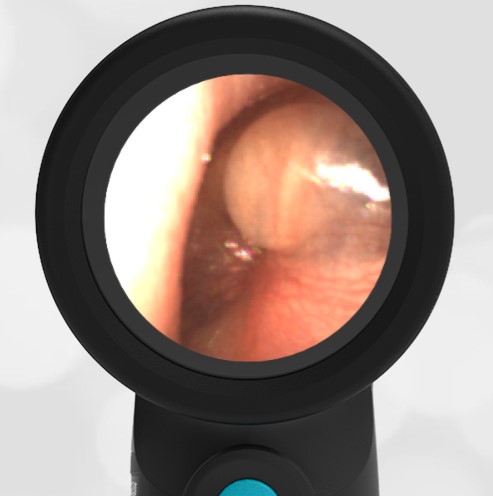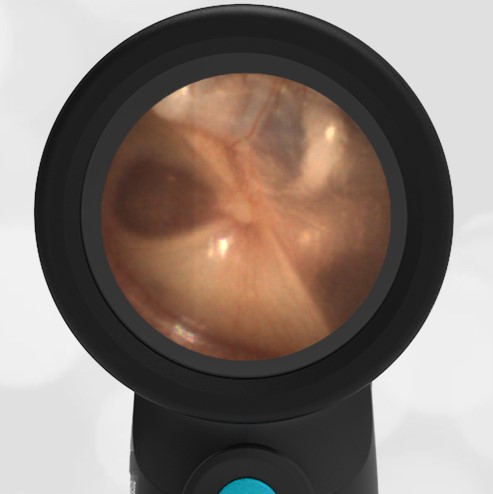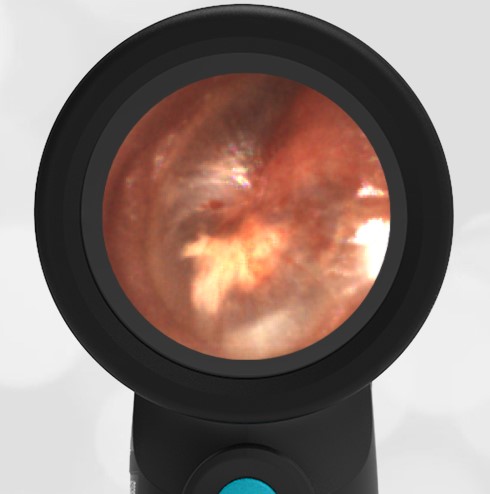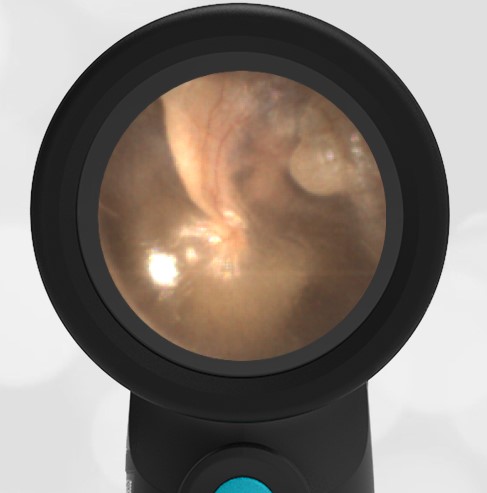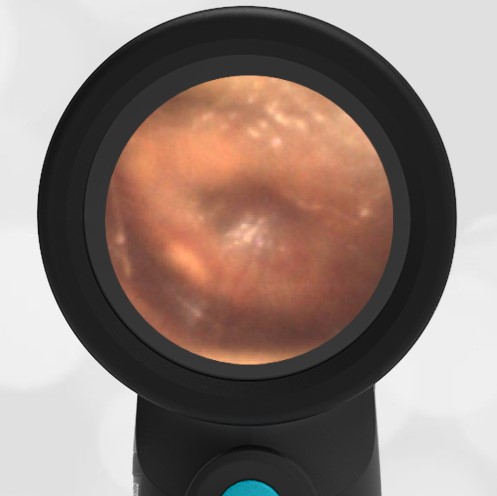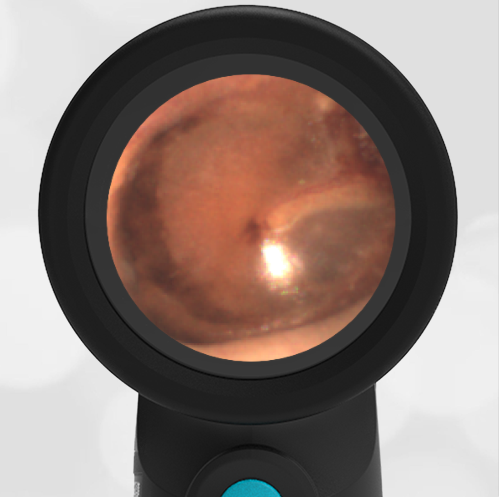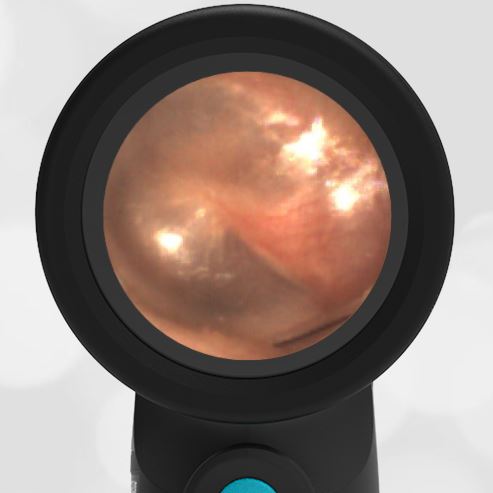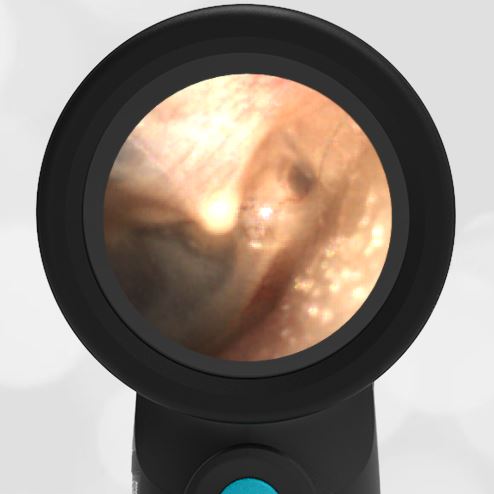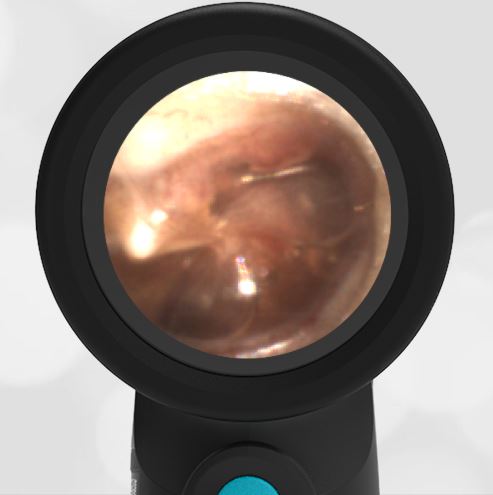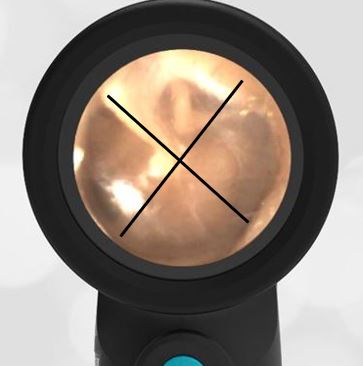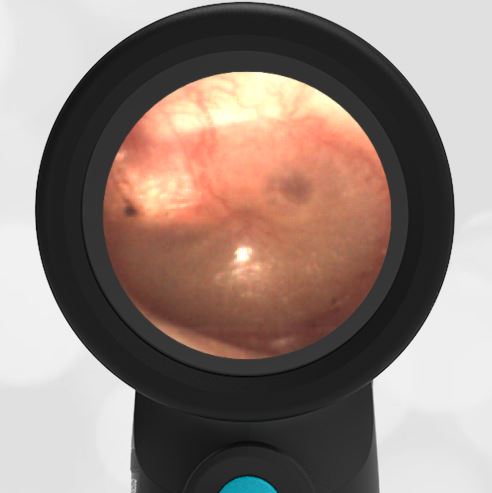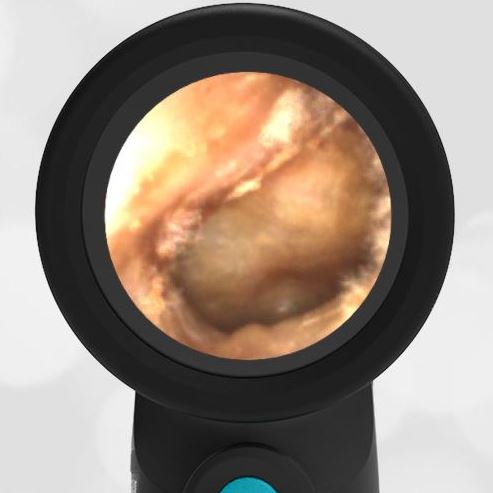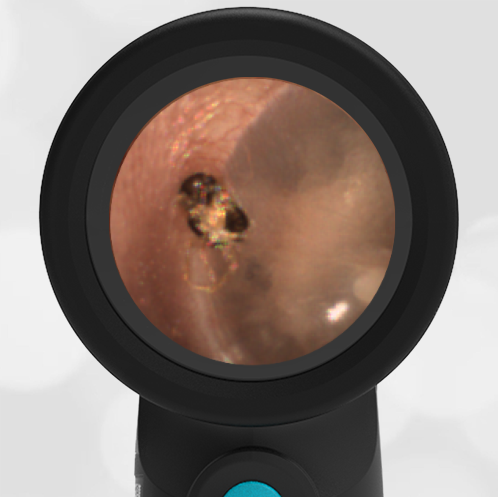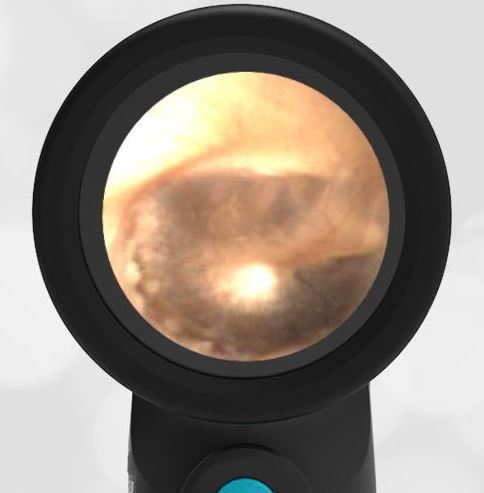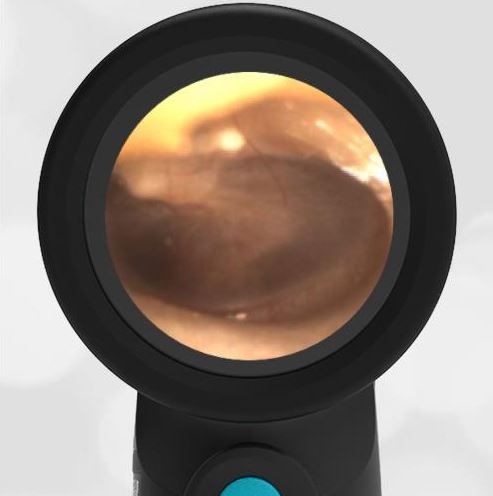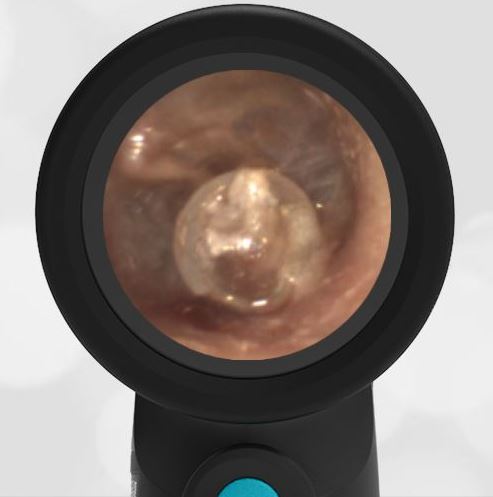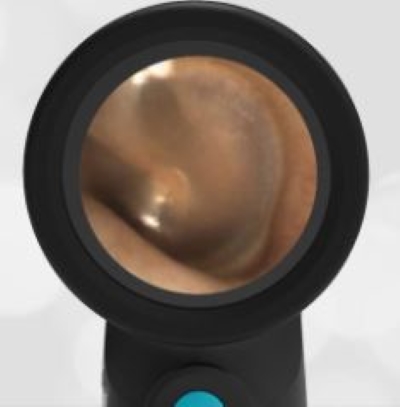
Bullous Myringitis
A 6-year-old male presents to the emergency department (ED) late in the evening with a complaint of left ear pain for the past hour. The child had been fighting an upper respiratory infection (URI) with congestion and low-grade fever for the past several days but had otherwise been well. The physical exam is remarkable for a crying child holding his hand over his left ear. He has moderate rhinorrhea.
His Wispr exam is notable for this image.
Which of the following is true regarding the child’s condition?
- Peak incidence occurs in the summer months.
- Diagnosis may require laboratory studies.
- This is a painless condition.
- Treatment should include consideration of antibiotics.
Answer: 4, Treatment should include consideration of antibiotics.
The child has bullous myringitis (BM), a relatively common infectious condition characterized by blisters (bullae) on the tympanic membrane (TM). BM may be on the “more severe” end of acute otitis media (AOM). It has the features of acute otitis media, bulging, loss of bony landmarks, and erythema (redness) with the additional finding of blistering on the TM.

Bullous myringitis has a peak incidence during the winter months corresponding to the traditional peak in respiratory viruses that play role in its pathogenesis. Among younger children, respiratory viruses including RSV and influenza predominate. Streptococcus pneumoniae is the most identified bacteria and is found in a higher prevalence in bullous myringitis compared to AOM. No further laboratory studies are needed to make the diagnosis. In the primary clinical environment, it is a visual diagnosis.
Bullous myringitis is often more painful than the typical case of AOM and clinicians should consider more aggressive management, including the use of topical anesthetic such as viscous lidocaine. The American Association of Pediatrics (AAP) recommends oral antibiotic regimens as appropriate. A follow-up to assess for resolution and any evidence of hearing loss is prudent as studies have observed a higher risk of recurrent AOM as well as hearing deficits following bullous myringitis.
Here is the complete video of the exam:
Complete exam video

